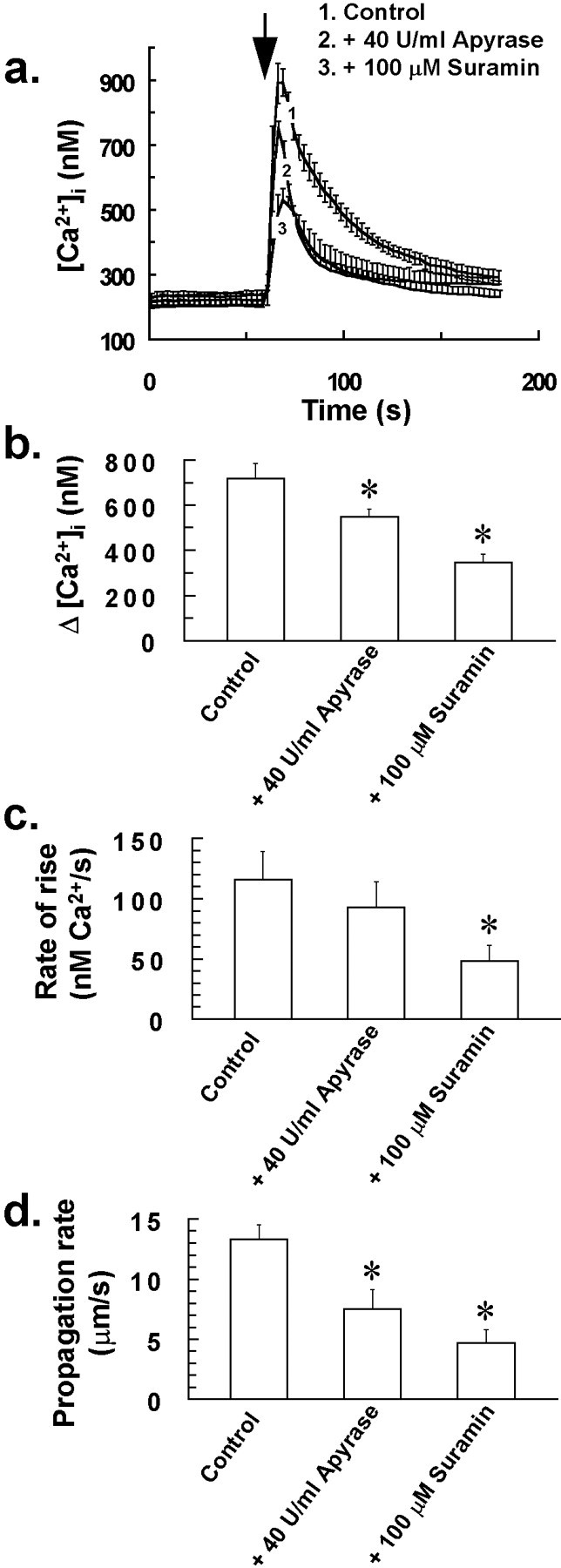Fig. 10.

The P2 receptor antagonist suramin and the ATP-degrading enzyme apyrase inhibit the stress-induced intercellular Ca2+ wave of glia. Pretreating cells with the general P2 receptor antagonist suramin (100 μm) or the ATP-degrading enzyme apyrase (40 U/ml) for 30 min resulted in a reduction in both Δ[Ca2+]i (a,b) and Ca2+ wave propagation rate (d) after mechanical stress of a single glial cell at the time indicated by the arrow in a. a,[Ca2+]i for 15 of the closest responding glial cells to the mechanically stressed target cell was averaged for individual experiments. Traces in arepresent the mean of these averaged responses from at least four separate experiments for each of the above treatments, with error bars indicating SD. Similarly, Δ[Ca2+]iand rate of rise of [Ca2+]i for 15 of the closest responding glial cells to the mechanically stressed target cell were averaged for individual experiments, with bars inb and c indicating the mean of these averaged parameters ± SD from at least four separate experiments (*p < 0.05 vs control value; Student'st test for unpaired observations). d,Effect of the above treatments on the stress-induced intercellular Ca2+ wave propagation rate. Bars in dindicate the mean Ca2+ wave propagation rate ± SD from at least four separate experiments (*p < 0.05 vs control value; Student's t test for unpaired observations). The extent of intercellular Ca2+ wave propagation was also affected by pretreating cells with suramin or apyrase, with waves usually restricted to coverslip areas of between 1 and 3 × 104 μm2, as opposed to 5 and 6 × 104μm2 for untreated control cells.
